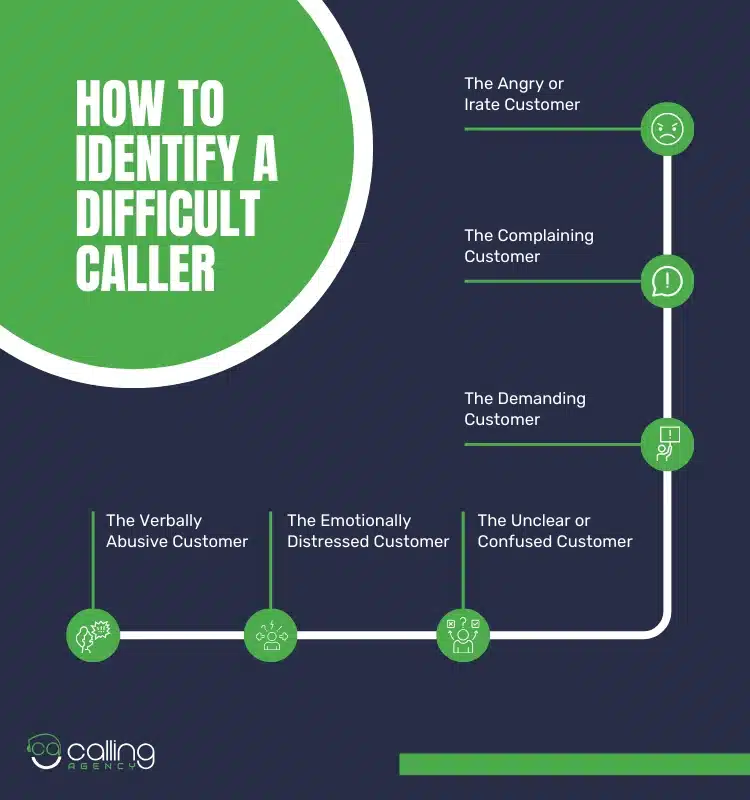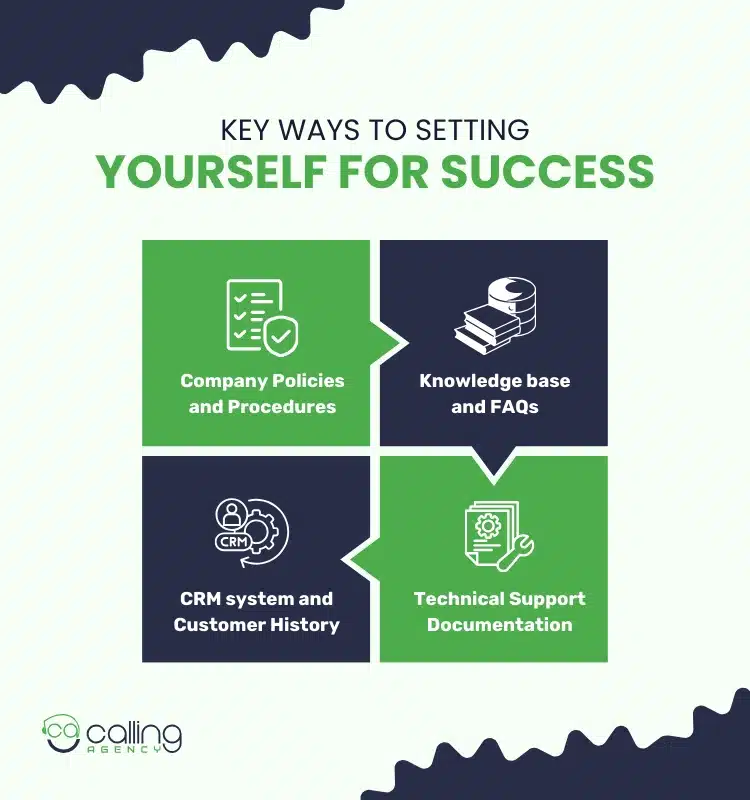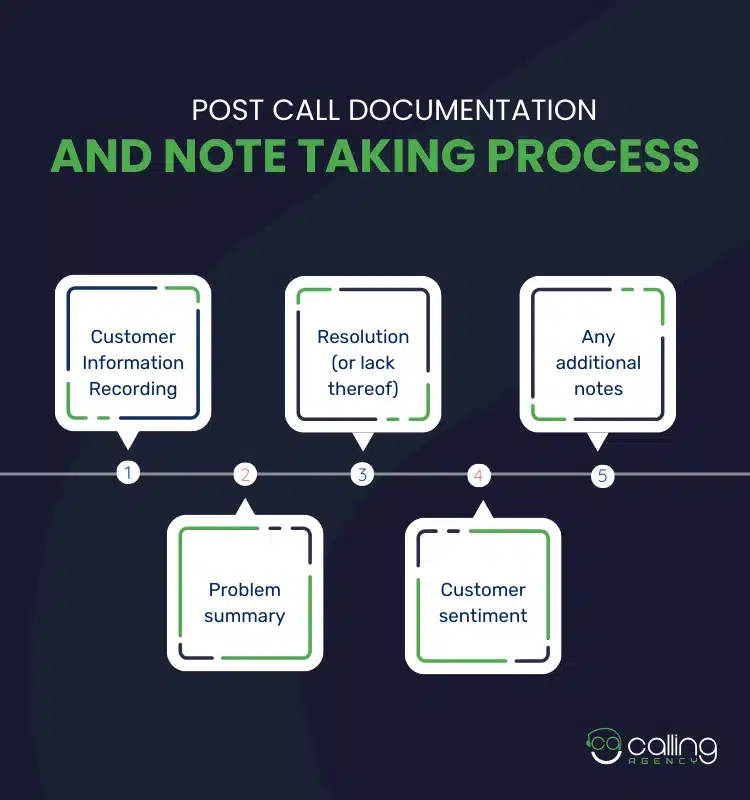Call center agents frequently face interactions with clients beyond routine inquiries into difficult situations. These calls, often optimized from significant customer pain points like frustration, confusion, or dissatisfaction, can be literally stressful and challenging for the call agents. You need to understand what makes a call difficult in the first steps towards effective management.
Therefore, identify the significant areas of difficult calls, which range from dealing with angry or demanding individuals to supporting unclear and emotionally distressing areas. This exploration of various types of challenging calls highlights the critical importance of proactive calls. Specifically, if you want to learn details in call handling techniques, it outlines the necessary performance tracking that equips agents with these tools and insights – see the following discussions.
What Makes a Call “Difficult”? Understanding the Types of Difficult Situations Facing the Call Agent!
In a call center, when a call agent receives a call, there may be some problematic responses. Some people’s interactions can quickly become challenging, stressful, and even frustrating. Understand that the different types of “difficult” calls are made for different reasons.
Likewise, a phone call can be weird due to the caller’s behavior or situation, and patience, professionalism, and highly skilled communication are needed when answering calls from your clients. Sometimes, difficult calls are considered unpleasant callers who are angry, highly demanding, confused, or challenging to mitigate the issues.
We can categorize difficult situations into several key types: (Understanding the Types of Difficult Situations)

- The Angry or Irate Customer: This type of caller is identifiable, and callers express their frustration by applying anger or hostility through loud voicing. They also may use aggressive language or interruptions. Here is where your challenges of reducing the tension and getting control of the conversation begin.
- The Complaining Customer: Callers aren’t necessarily infuriated, but they’re dissatisfied due to continuous dissatisfaction. They may continuously express the same dissatisfaction with detailed but minor issues or refuse to accept situations. Your call agents need to face challenges in patiently addressing their concerns, offering alternative solutions, and managing your clients’ expectations.
- The Demanding Customer: The caller sometimes required more than expected. They may be impatient, out of temper, or simply unaware of company policies and limitations. The most challenging part is setting a clear boundary while maintaining professionalism and finding a reasonable compromise.
- The Unclear or Confused Customer: The caller may try to articulate their problem clearly or may mislead the information. These challenges may potentially guide them through the process, clarifying information and ensuring understanding.
- The Emotionally Distressed Customer: Sometimes, customers experience significant emotions with distress, such as grief, anxiety, or personal crises. In this situation, your agent must understand the condition with enough patience and potentially refer to convenient resources. This challenge provides emotional support by addressing effective and immediate issues.
- The Verbally Abusive Customer: During difficult call handling cases, callers may use abusive words, harass your agents, or make threats. These situations demand immediate intervention and are attached to the company protocol for handling abusive behavior. This issue often involves separating, if necessary, and escalating to a supervisor.
Preparation is Key: Setting Yourself Up for Success
Managing difficult calls effectively and proactively preparing yourself for whatever comes. If you’re a surgeon, you wouldn’t enter the operating room without preparation. Accordingly, you shouldn’t approach a potentially difficult call without the right tools and mindset. Proactive situations significantly enhance your opportunity to come your way. You should approach a potential challenging call without using the necessary tools for a positive outcome, reducing stress and improving customer satisfaction. Here’s how to set yourself up for success:
1. Know Your Resources
Before driving your call-handling operation, preparation is the key to effective call handling, minimizing stress, and maximizing your positive outcomes. When you answer the phone, you need to ensure you have easy access to all relevant resources.

- Company Policies and Procedures: You need to be familiar with your company guidelines before answering a phone call, and ensure you have easy access to all necessary resources, and related products, services, refunds and complaints.
- Knowledge base and FAQs: Structured knowledge is about knowing the rules and limitations before preventing on-the-spot errors and confusion. Also, having quick access to your comprehensive FAQ database or internal knowledge base significantly speeds up problem-solving and provides quick answers to common questions and troubleshooting issues.
- CRM system and Customer History: You should have access to your customer’s history to understand past interactions, purchases, and previous issues. This contextual information helps you to build a personalized interaction with assuming your customer’s needs.
- Technical Support Documentation: If there are common technical issues, you should have access to clear, concise documentation to guide you through the troubleshooting process.
2. Master Reconciliation Techniques
When difficult calls are often conducted by the emotional customer. Here is how to practice techniques to moderate tense situations.
- CRM System Proficiency: You should be familiar with your customer relationship management (CRM) connection. Besides, quick access to your customer history and previous interactions is valuable in understanding context and resolving issues efficiently.
- Understanding and Validation: At first, you acknowledge the customer’s feelings, even if you don’t agree with your customer’s perspective. This is to focus on your understanding that builds personal relations.
- Active Listening: Practice listening in order to understand your customer’s perspective rather than simply planning to set your response. This is focused on your understanding and helps reduce tensions.
3. Acknowledge and validate the Customer’s Feelings
even if you don’t agree with their assessment of the situation. A simple phrase like, “I understand your frustration,” can significantly change your customer’s anger.
- Clear and Concise Communication: You need to practice speaking clearly and steadily, using simple language. While you talk, you need to avoid jargon or technical terms, prioritizing your prosperity. Handling difficult calls can be emotionally draining.
- Adequate rest and nutrition: You must have an objective for prosperity to improve your focus, patience, and overall ability to handle stress.
- Controlling Your Tone: Always track your own tone of voice, speaking calmly and professionally, even when faced with aggression.
- Using Positive Language: Frame your customer responses constructively by focusing on solutions rather than problems.
4. Prepare Your Workspace
Always balance your emotional and physical state, which directly impacts your ability to handle difficult calls effectively.
- Stress Management Techniques: You need to implement stress-reducing techniques into your daily routine. This might include mindful exercise, regular breaks, or physical activity.
- Health Lifestyle: Prioritizing a healthy diet and sufficient sleep with regular exercise. This contributes significantly to stress and mental pressure.
- Self-Care: You may engage in activities outside to enjoy your work and maintain a healthy work-life balance.
Essential Techniques: Handling Difficult Calls in Real Time
This section focuses on strategies for navigating challenging customer interactions. Remember, your goal is to be calm, understanding and committed.
- The Foundation of Understanding: This goes beyond simply listening to the customer’s words. Active listening includes your full concentration on understanding, responding, and remembering what is being said:
- Focus and Minimize Distractions: Give your full attention to your customer consistently. Never try to stay where background noise and internal distractions are found.
- Verbal Affirmation: Always make a few verbal agreements like “Okay, I got it” or “Yes” to indicate that you are following your customer’s flow of voice.
- Paraphrase and Summarize: Restate your customer’s problem in your own words to confirm that you have understood their pain points correctly and to demonstrate to them that the conversation is being heard. For instance, “If I’m hearing this right, you did not receive your order, and it was supposed to arrive last week.”
- Understanding Customer’s Statement: Always acknowledge your customer’s feelings without agreeing with their perspective.
Connecting with the Customer’s Emotion
Difficult calls often create frustration, anger, or disappointment, and acknowledging these emotions is vital.
- Try to understand their perspective: You should understand your customer’s situation from the customer’s perspective.
- Recognize and accept what they are feeling: Let know the customer’s emotion. Avoid using negative language. Instead of saying, “There’s no need to be upset,” try to say, “I understand why you’re feeling like this.”
- Focus on the Issue, Instead of Targeting the Person: If your customer is rude, maintain a professional demeanor and address the problem they are facing.
Staying Calm and Maintaining Self-Control
It’s understandable that for an ongoing difficult call, you may be under stress and defensive, yet controlling the quality of the call, including the body language and tone of voice, is key:
- Take Deep Breaths: If you notice your hot buttons are already pushed, pause for a few moments and take a deep breath before responding to the angry caller.
- Speak clearly and slowly: If you become calm, which measured tone can help to reduce the situation avoiding getting down into a raised voice.
- Do Not Argue or Get Defensive: You should always be looking for how to solve the problem, not who is right or wrong.
- Use “I” Statements: If you are clarifying misunderstandings, always respond with “I” statements to avoid an accusatory tone. That gives you a leg up on how to talk about complex issues because you don’t have to use language such as “You didn’t understand the policy.” Instead, try “I can see how the policy might have been unclear.”
Clearly Defining the Problem and Setting Expectations
When you and your customer are staying on the same page regarding the following issues:
- Ask Clarifying Questions: When making assumptions, ask an open-ended question to get a complete understanding of your customers’ problem.
- Summarize the Issue: At the time of your understanding the problem, repeat the issue to your customer for confirming the accuracy.
- Explain the Next Steps: You need to create an outline of what you will do to help resolve the issue and provide a specific timeframe. Never make any commitment or promise that you can’t carry out.
- Manage Expectations: Be updated on what you can do or not. If a commitment isn’t immediate, you need to explain the process and when they can expect an update.
Offering Solutions and Taking Ownership
Customers are always looking for instant answers. So, you need to be active in finding a quick solution.
- Explore All Available Options: You must be aware of your company’s policy and procedures to detect potential solutions.
- Delegating to Resolve: If you have an option, take ownership of your client issues and see this as a way of solving issues. This will build your rapport with the customer.
- Offer Alternatives: If your initial application doesn’t get a response, you can offer alternative solutions or compromises.
- Document Everything: You can keep all records in detail during the conversation regarding the issues and steps that need to be taken.
Using Positive Language
Your every word has a significant impact on your customer’s perception during interaction.
- Focus on How You Can Do It: Never use any type of negative words to your customer, saying, “Sorry, I can’t do that…” Instead of those words, try to use “Please give time, I can do it ….”
- Use Positive Phrasing: Place positive phrasing behind you all the time, “I would love to help you with that” or “Let’s find out what I can do for you.” parameters to devise a more positive tone.
Post-call Procedures: Wrapping Up and Moving on
Successful navigation of a difficult call isn’t about the conversation; it’s about how you handle the aftermath. Effective post-call procedures are vital to your advantage and the overall efficiency of the call center.
1. Documentation and Note-Taking
Meticulous record-keeping is a principle, and immediately after disconnecting, the document is a key detail of the call, including:

- Customer Information Recording: Keep records of your customer’s name, account number, and contact information.
- Problem summary: Note down a concise description of your patient’s issue.
- Actions Taken: Outline the steps you took in your records to resolve the problem, including any actions or referrals.
- Resolution (or lack thereof): Just think to yourself, have you resolved the issue, or what are the next steps to complete your commitment?
- Customer sentiment: Note your customer’s emotional states throughout the call, like frustration, anger, or calm. This will help you to identify trends and potential areas for improvement.
- Any additional notes: These steps could include specific details about your customer’s personality or communication style that could inform future interactions.
2. Self-care and Stress Management
Dealing with difficult calls is not easy. You may be exhausted emotionally. Therefore, take some time after each challenging interaction to recover the situation. These steps include:
- Deep breathing exercises: You must calm down your nervous system.
- Short breaks: When you’re too exhausted, step away from your workstation for a minute.
- Mindfulness techniques: Be attentive, and centralize yourself and refocus.
- Team support: Share with your colleagues or supervisor if you need support.
4. Continuous Learning and Improvement
After each difficult call, focus on your performance.
- Find an Alternative Solution: When you can’t find a solution in the usual system, find an alternative system to resolve your customer’s issue.
- Use these Experiences as Opportunities: To ensure future growth, utilize difficult call handling experiences for future opportunities.
- Identify the valuable insights: Check your documents and detect your potential recurring challenges, and improve your overall approach.
5. Feedback and Training
Share your customer handling difficulties with your team and supervisor.
- Identify Areas Where Improvement Is Needed: When you’re unable to face difficulties. Share insights with your team member or supervisor to get training or process improvement steps needed for you.
- Use Specific Training & Problem-Solving Techniques: If you are constantly faced with certain types of difficult calls, use this feedback for a training session that can focus on specific problem-solving techniques.
6. Customer Satisfaction Follow-up (Where Applicable)
Depending on the nature of the calls and your company policy, develop a follow-up call strategy.
- Send an email, which is necessary to check your customers’ current status.
- This will ensure customer satisfaction with the resolution and build rapport.
The Role of Training and Continuous Improvement in Handling Difficult Calls
Consistent training and a commitment to continuous improvement are needed for future growth. Besides, your fundamental pillars of success in operating difficult calls within a call center are ongoing investments to ensure your team is equipped to navigate the challenges of customer service:
Initial Training and Onboarding
Comprehensive initial training is the bedrock upon which all subsequent improvement rests. This should include
- Communication Skills: To enhance your communication skills, you need to improve your active listening skills, clarify your customer calls, and provide emotional support with non-verbal communication techniques.
- Mitigation Strategies: Need specific techniques for handling your angry customer, managing interruptions with emotional outbursts.
- Problem-solving methodologies: You can structure approaches to identifying the root cause of customer issues and develop an effective resolution.
- Company policies and procedures: Through your understanding of internal protocols for handling various scenarios, including customer complaints.
- Technology Proficiency: You need to be familiar with all relevant software, systems, and tools used during your customer interactions.
- Stress Management Techniques: During the time facing the same type of difficult calls, you should have strategies to manage your stress and tiredness, including self-care practices and coping mechanisms.
Ongoing Training and Development
The landscape of customer service is ever-evolving. Regular training keeps your team updated on:
- New products and services: Ensure your agents can accurately answer the customers’ questions and provide support accordingly.
- Updated processes and procedures: You must be accustomed to changes in company policies and procedures.
- Advanced communication techniques: Advanced opportunities for the agents to increase their skill set through workshops, simulation, or role-playing exercises.
- New technologies and tools: Keep your agent up to date with any technical advancements that improve efficiency and customer experience.
- Best practices: Share your successful strategies and techniques to your team members and supervisor.
Performance Feedback and Coaching
Regular performance feedback and coaching are essential to identify areas of strength and weakness.
- Call monitoring and evaluation: Supervisors can listen to call records to provide constructive feedback on communication skills, problem-solving techniques, and adherence to company protocols.
- Individual coaching sessions: Planning for one-on-one sessions provides opportunities for targeted feedback and personalized guidance.
- Peer-to-peer learning: Conduct peer review systems with your agents for sharing the best practices and learn from head-to-head feedback and experiences.
- 360-degree feedback: This system includes gathering feedback from supervisors, peers, and even customers to get a comprehensive view of agents’ performance.
Continuous Improvement Initiatives
A culture of continuous improvement should be embedded within the call center quality. This might involve:
- Regular performance reviews: Update your agent’s performance by tracking metrics like customer satisfaction scores and call handling times.
- Process optimization: Identify obstacles and inefficiencies in present appraisal systems and bring effective changes to improve the process.
- Technology upgrades: Invest in new technologies to improve your agent productivity and increase your customers’ experiences.
- Regular surveys and feedback mechanisms: Finally, incorporate feedback from both agents and customers to identify improvement areas.
Conclusion
Handling difficult calls effectively is an essential skill for call center success that directly impacts both your agents and customer satisfaction. Recognizing the significant areas of difficult calls, where difficult calls are driven by anger, confusion, demands, or emotional distress. Your call agents are customized to their approaches, addressing underlying customer pain points with emotional support and maintaining professionalism.
You need to hire an agent to track the benefits of difficult or angry customer handling assistance by providing support for handling difficult calls with ongoing support & training, and creating a culture for continuous improvement. The CallingAgency can be your best option to choose skilled, difficult call handling agents for your business. We have more than a decade of experience in handling multiple levels of customers throughout the world.
If you’re looking for an expert, difficult call handling agent as per your business requirement, with a customized plan & pricing, contact CallingAgency today for a free consultation.





